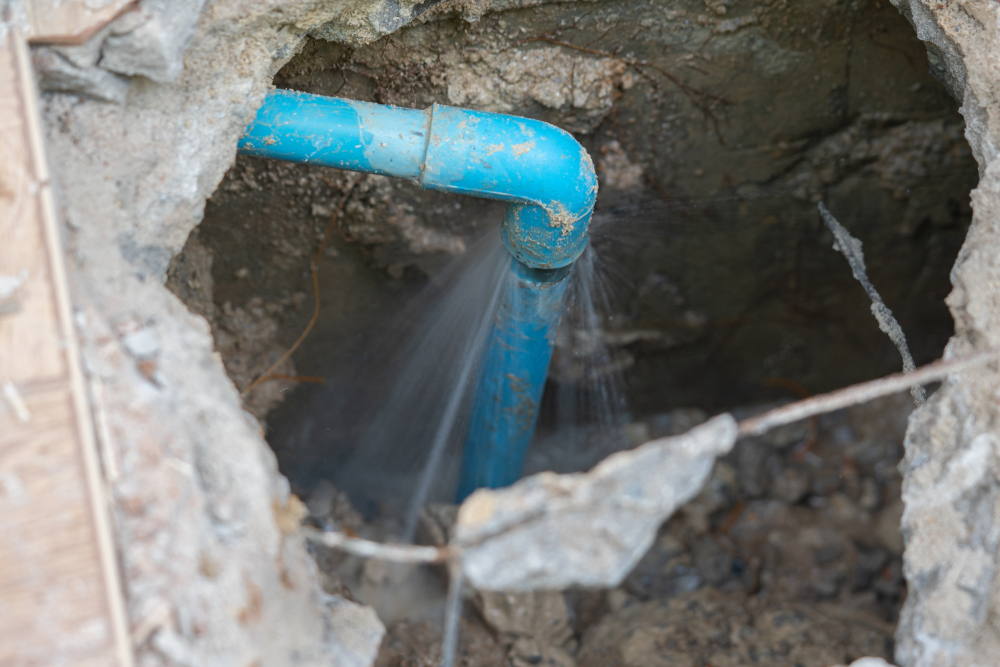6 Methods to Identify Hidden Water Line Leaks Efficiently
6 Methods to Identify Hidden Water Line Leaks Efficiently
Blog Article
Nearly everybody seems to have their private perception about Finding hidden leaks.

Early detection of dripping water lines can minimize a potential catastrophe. Some little water leakages might not be visible.
1. Analyze the Water Meter
Every home has a water meter. Checking it is a surefire way that assists you find leakages. For beginners, switch off all the water sources. Ensure nobody will certainly purge, make use of the tap, shower, run the cleaning machine or dishwasher. From there, go to the meter and watch if it will alter. Given that no person is utilizing it, there need to be no activities. If it moves, that indicates a fast-moving leak. If you discover no modifications, wait a hr or 2 as well as inspect back once again. This implies you may have a slow leak that could even be below ground.
2. Check Water Consumption
Assess your water bills and track your water intake. As the one paying it, you must observe if there are any kind of inconsistencies. If you identify sudden changes, in spite of your usage being the same, it implies that you have leaks in your plumbing system. Bear in mind, your water bill ought to fall under the very same variety on a monthly basis. An abrupt spike in your expense indicates a fast-moving leak.
A stable rise every month, even with the same behaviors, reveals you have a slow leak that's also slowly rising. Call a plumber to completely examine your residential or commercial property, especially if you feel a cozy location on your flooring with piping beneath.
3. Do a Food Coloring Test
When it comes to water usage, 30% comes from commodes. If the color in some way infiltrates your dish during that time without flushing, there's a leakage in between the storage tank and bowl.
4. Asses Exterior Lines
Don't fail to remember to check your exterior water lines also. Should water seep out of the connection, you have a loose rubber gasket. One small leakage can throw away tons of water as well as increase your water bill.
5. Analyze the situation and inspect
Homeowners should make it a practice to check under the sink counters as well as also inside closets for any kind of bad odor or mold development. These 2 warnings show a leakage so punctual focus is needed. Doing routine evaluations, even bi-annually, can conserve you from a significant issue.
Inspect for stainings and also deteriorating as many pipelines as well as devices have a life expectancy. If you presume leaking water lines in your plumbing system, do not wait for it to escalate.
Early discovery of leaking water lines can reduce a possible catastrophe. Some tiny water leakages may not be visible. Examining it is a guaranteed means that assists you find leaks. One small leakage can squander lots of water and surge your water costs.
If you think dripping water lines in your plumbing system, do not wait for it to escalate.
WARNING SIGNS OF WATER LEAKAGE BEHIND THE WALL
PERSISTENT MUSTY ODORS
As water slowly drips from a leaky pipe inside the wall, flooring and sheetrock stay damp and develop an odor similar to wet cardboard. It generates a musty smell that can help you find hidden leaks.
MOLD IN UNUSUAL AREAS
Mold usually grows in wet areas like kitchens, baths and laundry rooms. If you spot the stuff on walls or baseboards in other rooms of the house, it’s a good indicator of undetected water leaks.
STAINS THAT GROW
When mold thrives around a leaky pipe, it sometimes takes hold on the inside surface of the affected wall. A growing stain on otherwise clean sheetrock is often your sign of a hidden plumbing problem.
PEELING OR BUBBLING WALLPAPER / PAINT
This clue is easy to miss in rooms that don’t get much use. When you see wallpaper separating along seams or paint bubbling or flaking off the wall, blame sheetrock that stays wet because of an undetected leak.
BUCKLED CEILINGS AND STAINED FLOORS
If ceilings or floors in bathrooms, kitchens or laundry areas develop structural problems, don’t rule out constant damp inside the walls. Wet sheetrock can affect adjacent framing, flooring and ceilings.
https://www.servicemasterbyzaba.com/blog/how-to-detect-water-leakage-in-walls/

I'm certainly very enthusiastic about Detecting hidden plumbing leaks and I'm hoping you liked our piece. Kindly take the opportunity to share this content if you liked it. Thank-you for going through it.
Excellence on call! Report this page